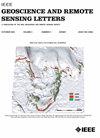威布尔分布地杂波中指数目标的平方律检测
IF 4
3区 地球科学
Q2 ENGINEERING, ELECTRICAL & ELECTRONIC
引用次数: 9
摘要
现代雷达系统使用平方律检测器来搜索和跟踪嵌入威布尔分布地杂波中的波动目标。然而,平方律检测器在存在威布尔杂波的情况下的理论性能分析导致了繁琐的数学公式。一些研究通过使用近似或数学伪像来简化计算,从而规避了这个问题。在这项工作中,我们推导了在指数目标和威布尔分布地杂波存在的情况下,平方律检测器的检测概率(PD)的闭合形式和精确表达式,用Fox H函数给出。与之前的研究不同,在我们的分析过程中没有进行近似或简化假设。此外,我们利用Cauchy剩余定理中极点的正交选择,导出了参考PD的快速收敛级数。顺便说一下,我们还获得了控制平方律检测器输出的和统计量的概率密度函数和累积分布函数的闭式解和级数表示。数值结果和蒙特卡罗模拟证实了我们表达式的有效性。本文章由计算机程序翻译,如有差异,请以英文原文为准。
Square-Law Detection of Exponential Targets in Weibull-Distributed Ground Clutter
Modern radar systems use square-law detectors to search and track fluctuating targets embedded in Weibull-distributed ground clutter. However, the theoretical performance analysis of square-law detectors in the presence of Weibull clutter leads to cumbersome mathematical formulations. Some studies have circumvented this problem by using approximations or mathematical artifacts to simplify calculations. In this work, we derive a closed-form and exact expression for the probability of detection (PD) of a square-law detector in the presence of exponential targets and Weibull-distributed ground clutter, given in terms of the Fox H-function. Unlike previous studies, no approximations nor simplifying assumptions are made throughout our analysis. Furthermore, we derive a fast convergent series for the referred PD by exploiting the orthogonal selection of poles in Cauchy’s residue theorem. In passing, we also obtain closed-form solutions and series representations for the probability density function and the cumulative distribution function of the sum statistics that govern the output of a square-law detector. Numerical results and Monte Carlo simulations corroborate the validity of our expressions.
求助全文
通过发布文献求助,成功后即可免费获取论文全文。
去求助
来源期刊

IEEE Geoscience and Remote Sensing Letters
工程技术-地球化学与地球物理
CiteScore
7.60
自引率
12.50%
发文量
1113
审稿时长
3.4 months
期刊介绍:
IEEE Geoscience and Remote Sensing Letters (GRSL) is a monthly publication for short papers (maximum length 5 pages) addressing new ideas and formative concepts in remote sensing as well as important new and timely results and concepts. Papers should relate to the theory, concepts and techniques of science and engineering as applied to sensing the earth, oceans, atmosphere, and space, and the processing, interpretation, and dissemination of this information. The technical content of papers must be both new and significant. Experimental data must be complete and include sufficient description of experimental apparatus, methods, and relevant experimental conditions. GRSL encourages the incorporation of "extended objects" or "multimedia" such as animations to enhance the shorter papers.
 求助内容:
求助内容: 应助结果提醒方式:
应助结果提醒方式:


